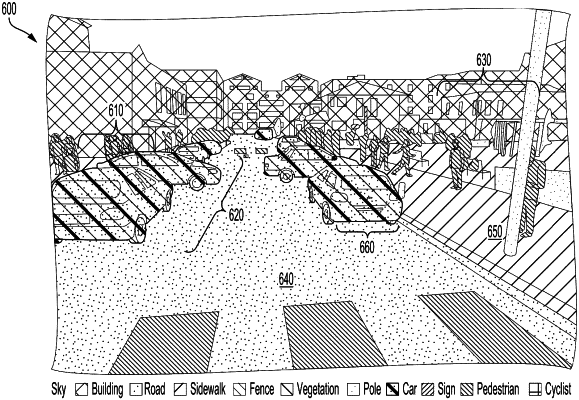| CPC G06T 7/571 (2017.01) [B60W 60/001 (2020.02); G01C 21/3407 (2013.01); G06F 18/24 (2023.01); G06T 7/11 (2017.01); H04N 23/672 (2023.01); B60W 2420/42 (2013.01); G06T 2207/10148 (2013.01); G06T 2207/20081 (2013.01); G06T 2207/30248 (2013.01)] | 15 Claims |

|
1. A method for range detection, comprising:
segmenting an image into one or more segmentation blobs captured by a monocular camera of an ego vehicle, in which each segmentation blob of the one or more segmentation blobs comprises a collection of pixels associated with one respective object of one or more objects in a scene surrounding the ego vehicle;
performing, by a monocular camera, an autofocus operation to focus the monocular camera on the collection of pixels forming a selected segmentation blob of the one or more segment blobs based on an autofocus function value used by the monocular camera during the autofocus operation;
determining, according to the autofocus function value received from the monocular camera, a distance to the selected segmentation blob;
transmitting the determined distance and subsequent determined distances to the selected segmentation blob to a downstream advanced driver assistance system (ADAS);
identifying, by the ADAS, an object represented by the collection of pixels forming the selected segmentation blob as a moving vehicle according to the determined distance to the selected segmentation blob received from the monocular camera;
tracking, by the ADAS, a trajectory of the moving vehicle according to the subsequent determined distances to the moving vehicle received from the monocular camera according to subsequent autofocus function values used by the monocular camera to capture the moving vehicle; and
planning and executing a change in a trajectory of the ego vehicle based on the tracking of the trajectory of the moving vehicle with the ADAS.
|